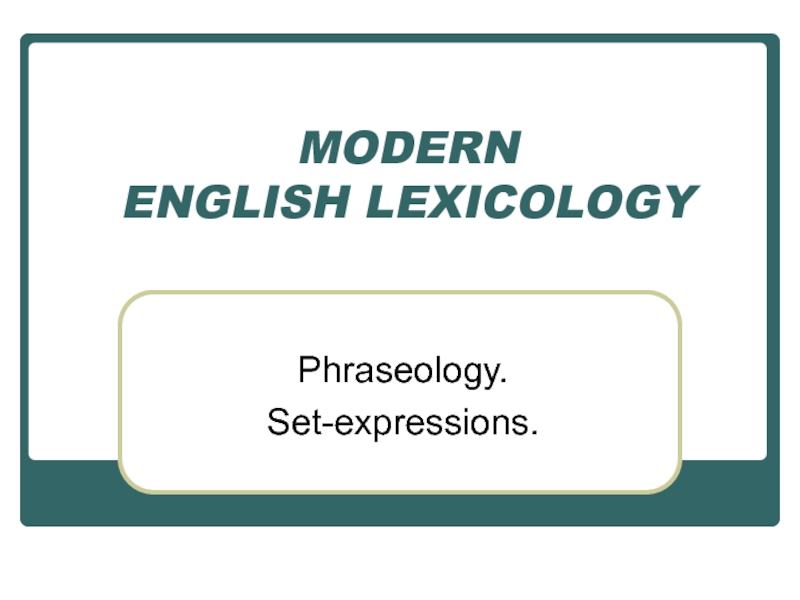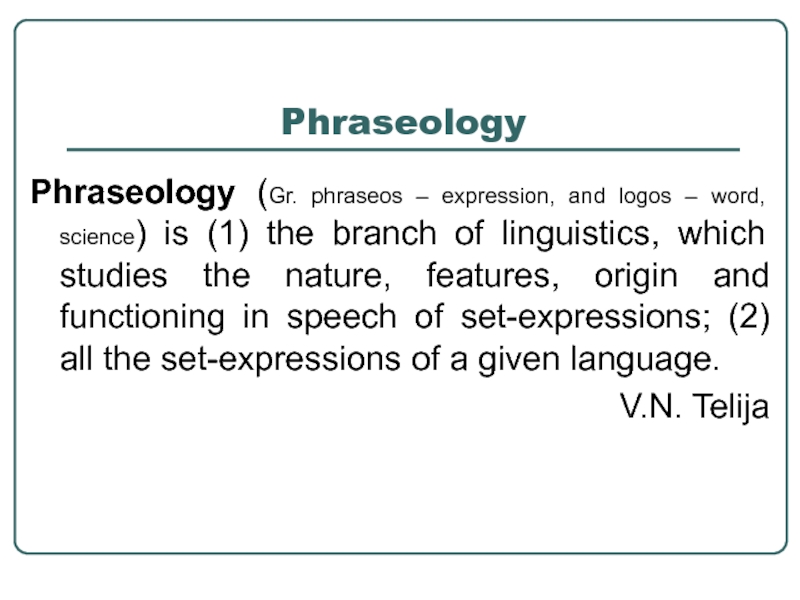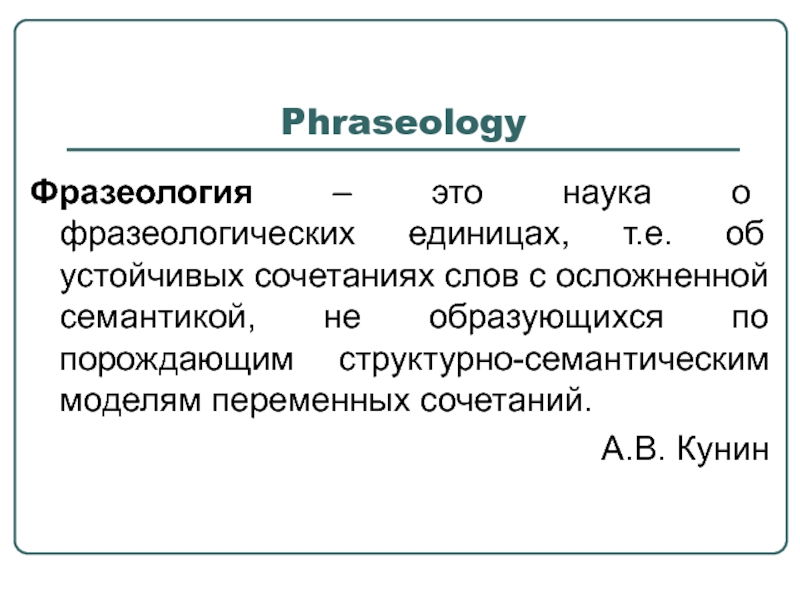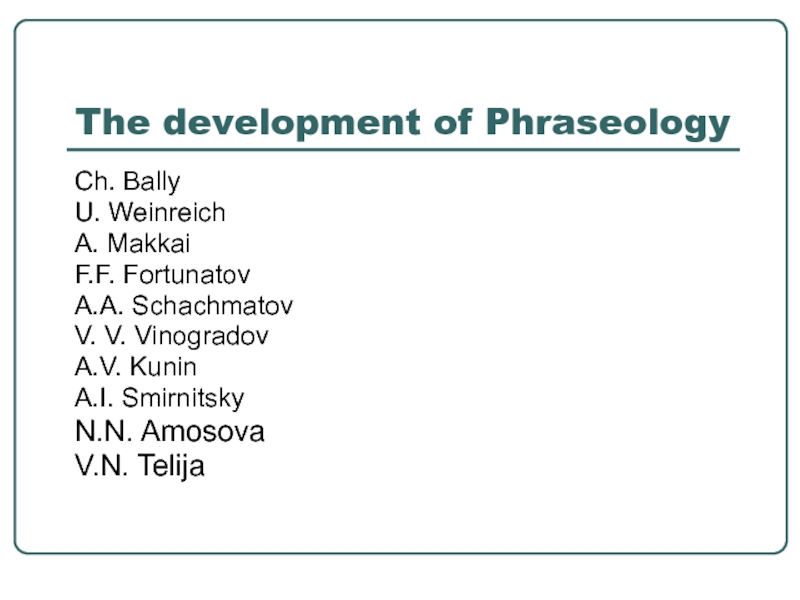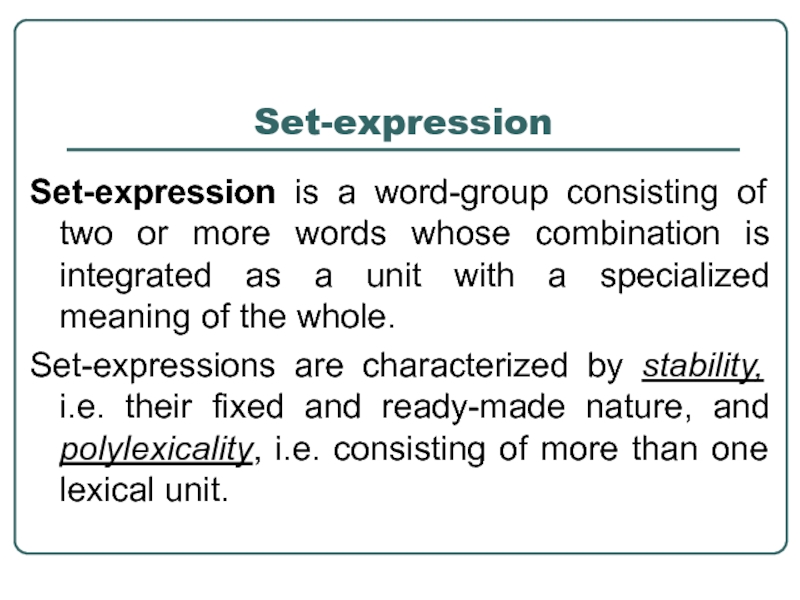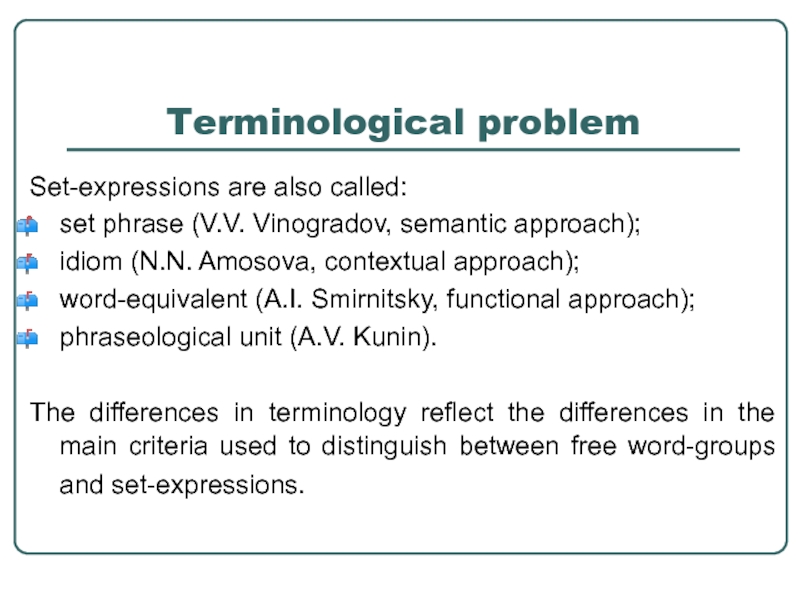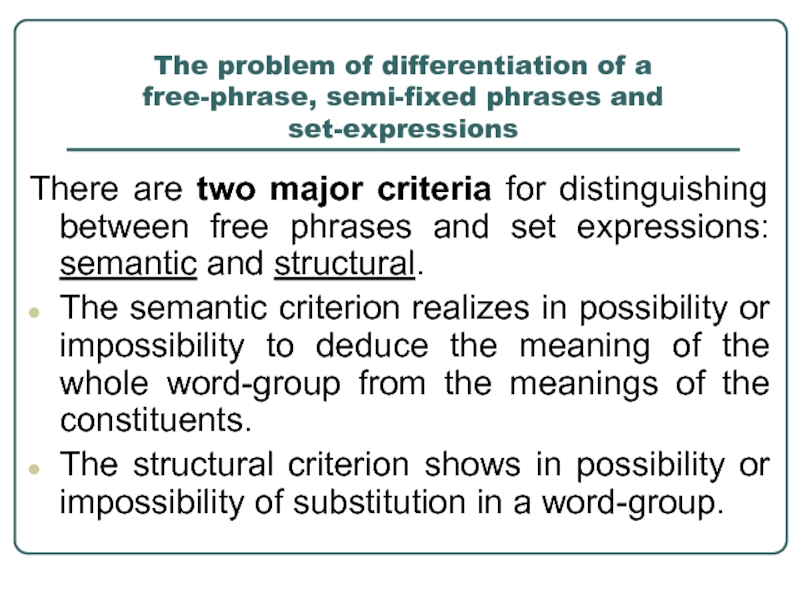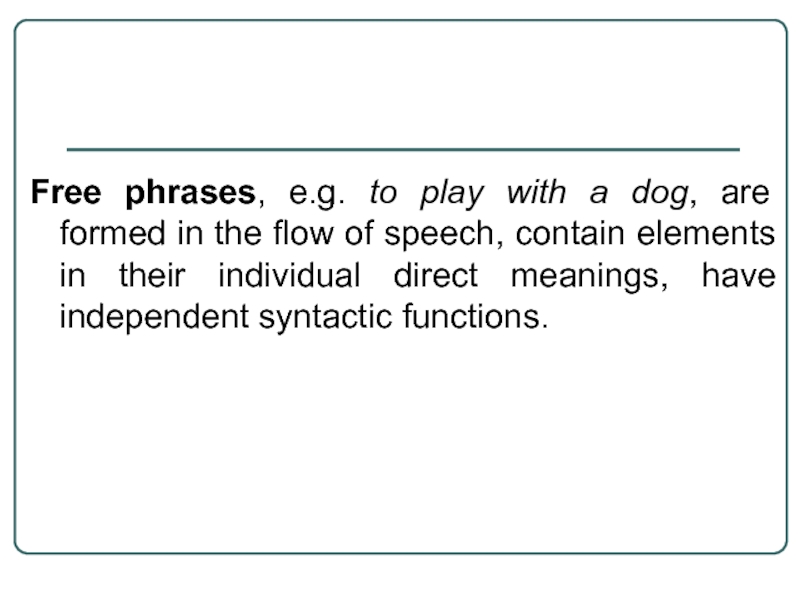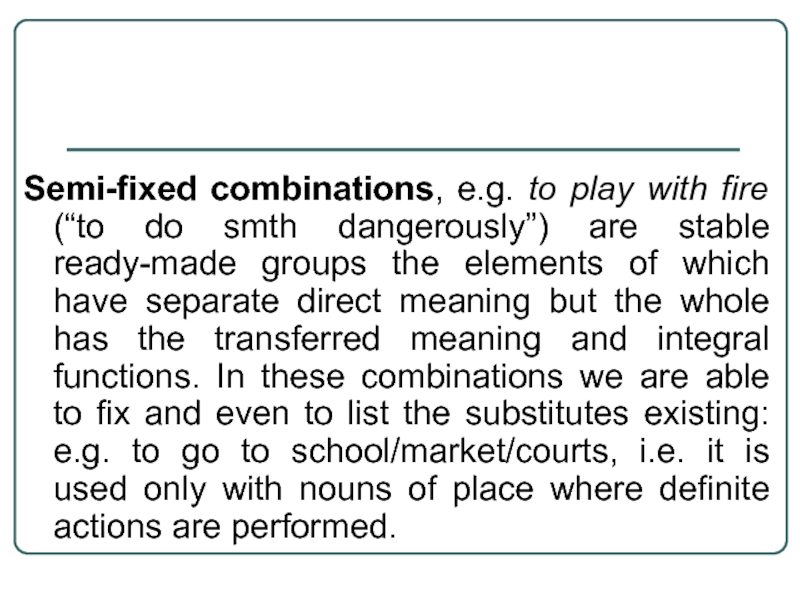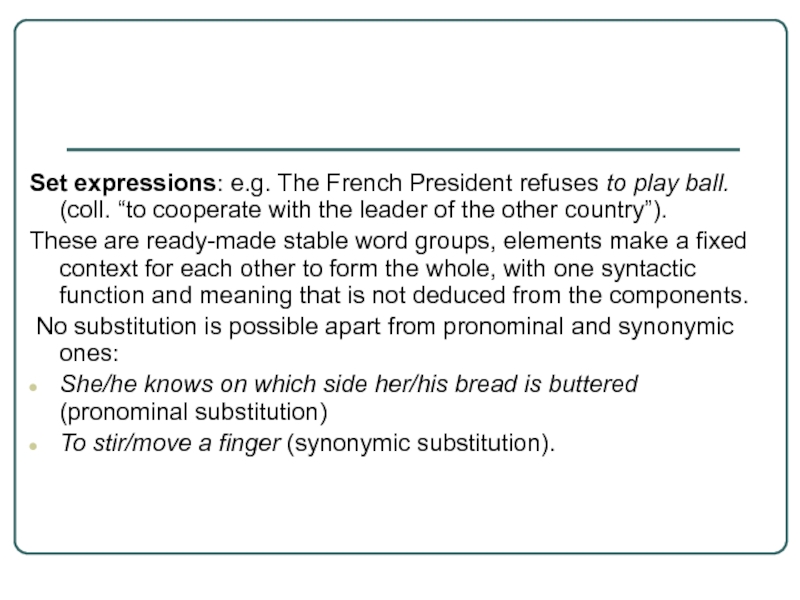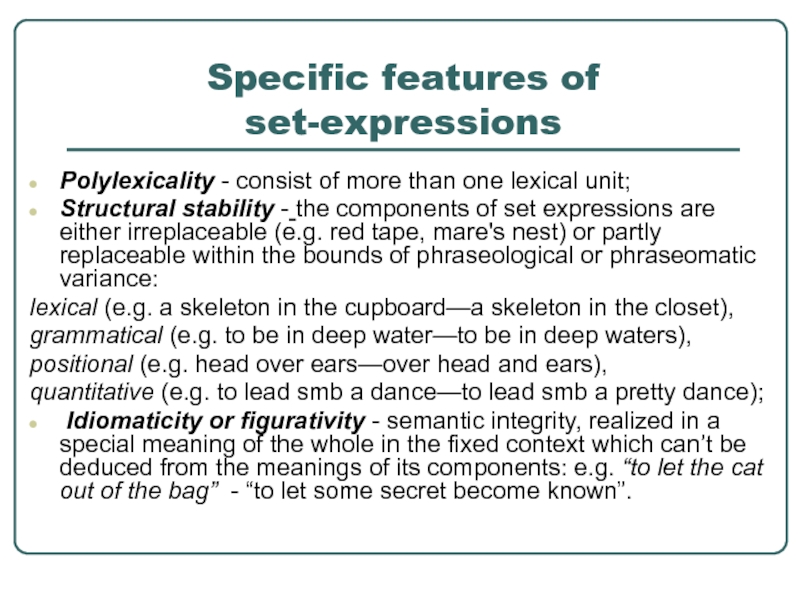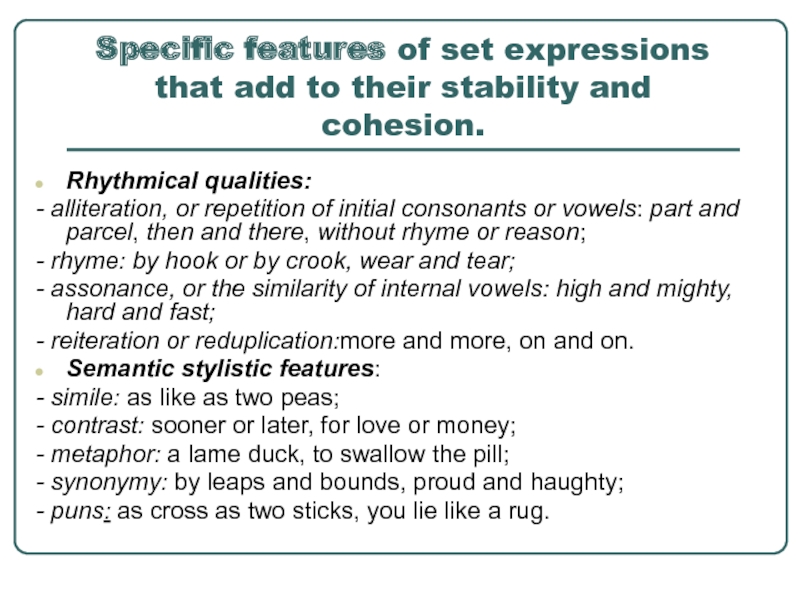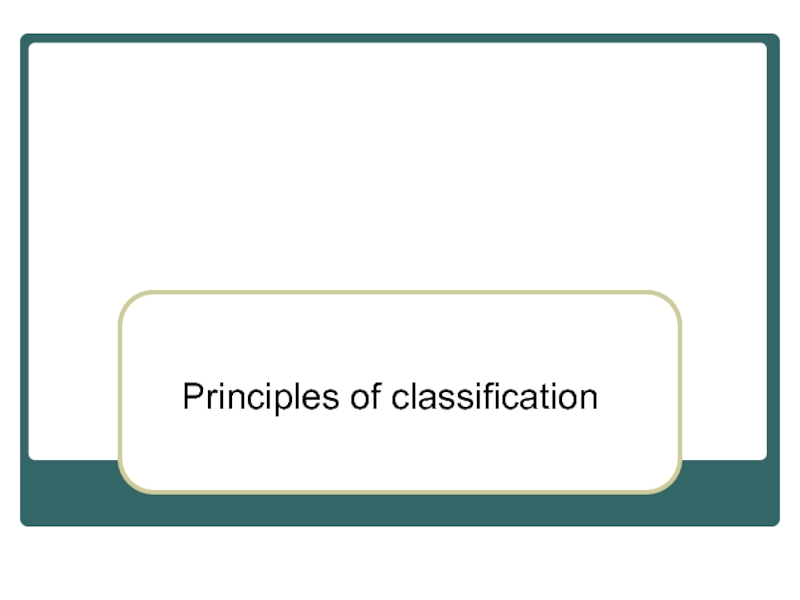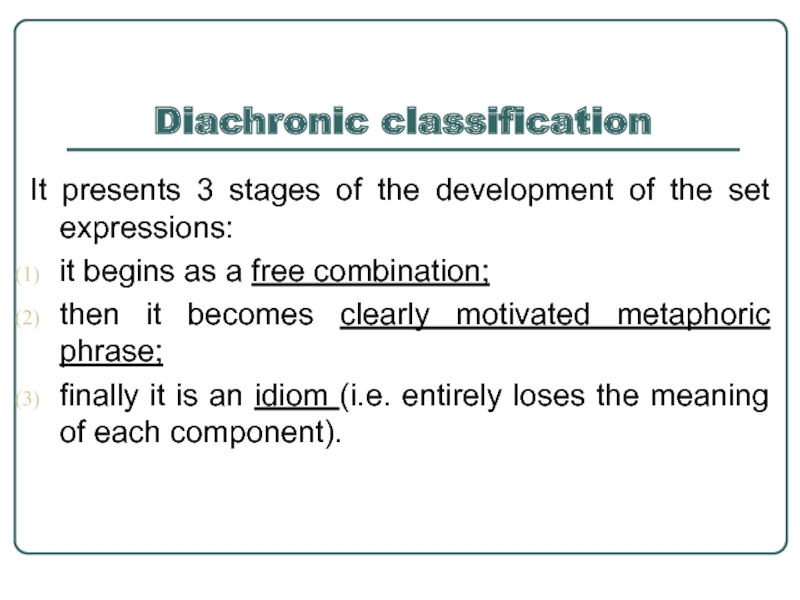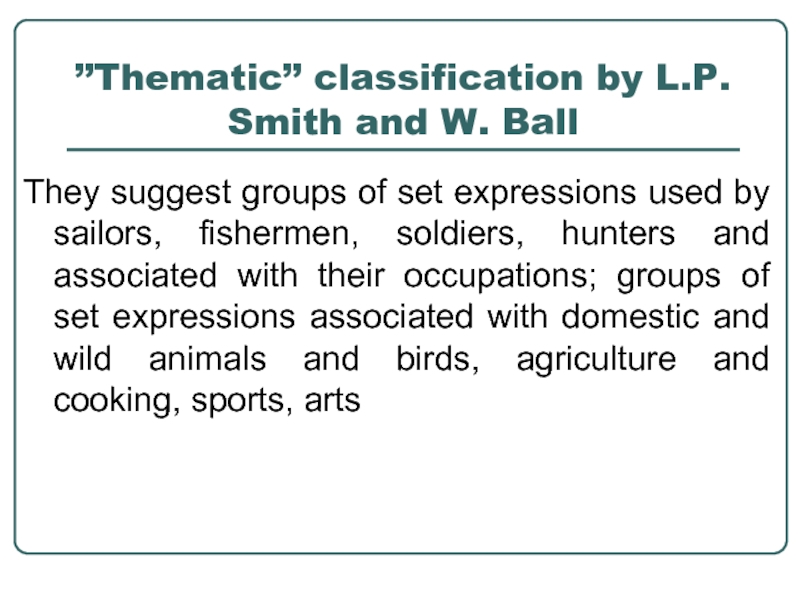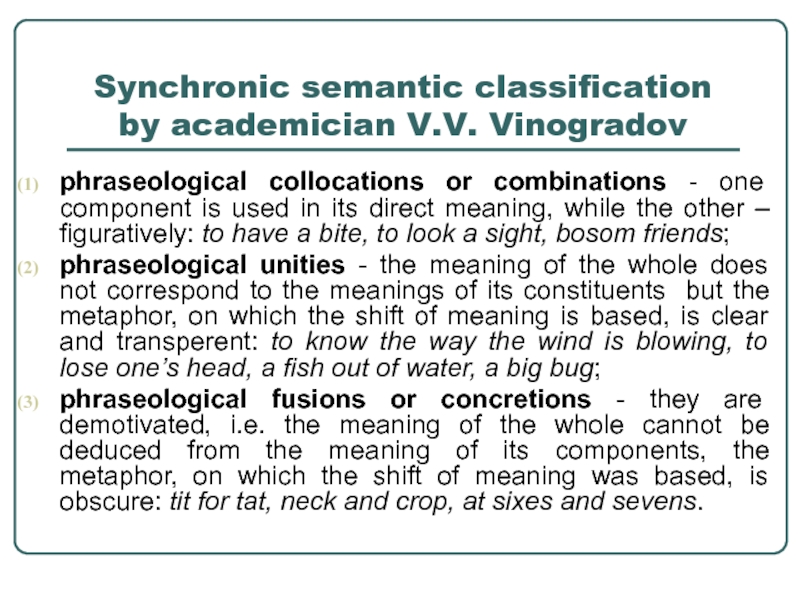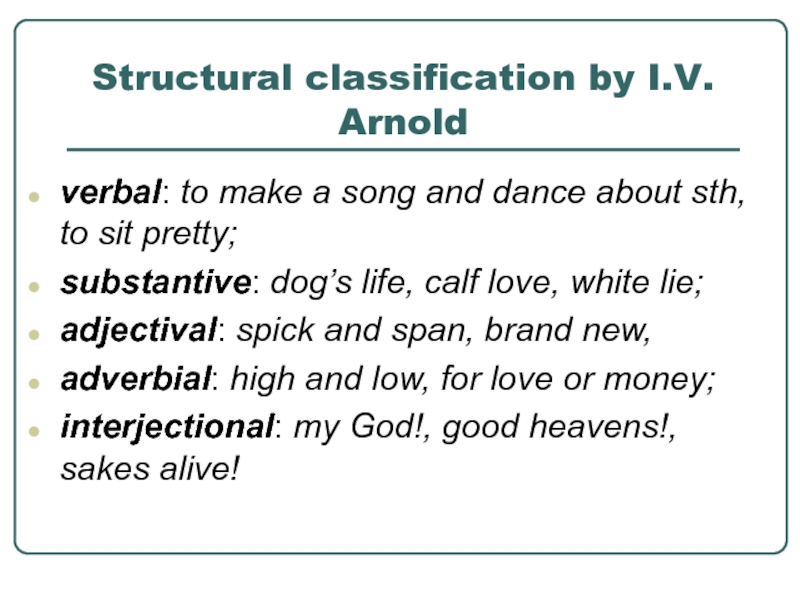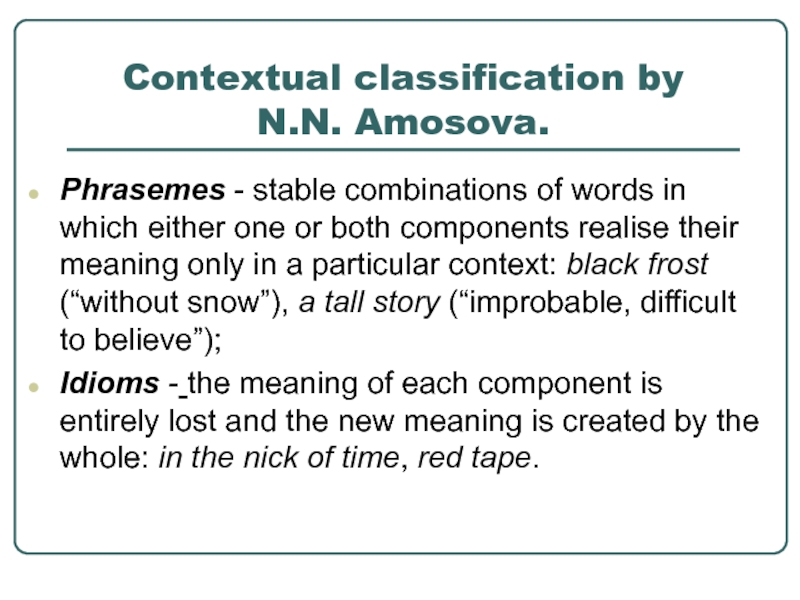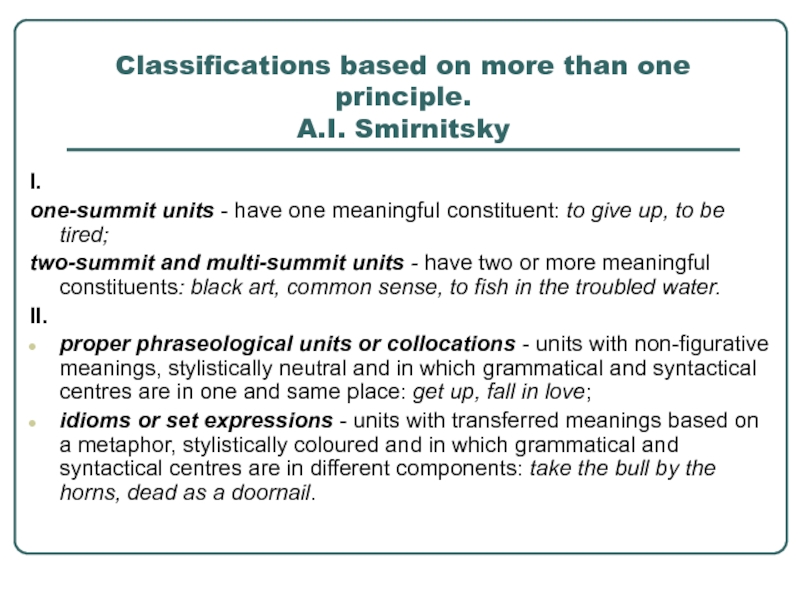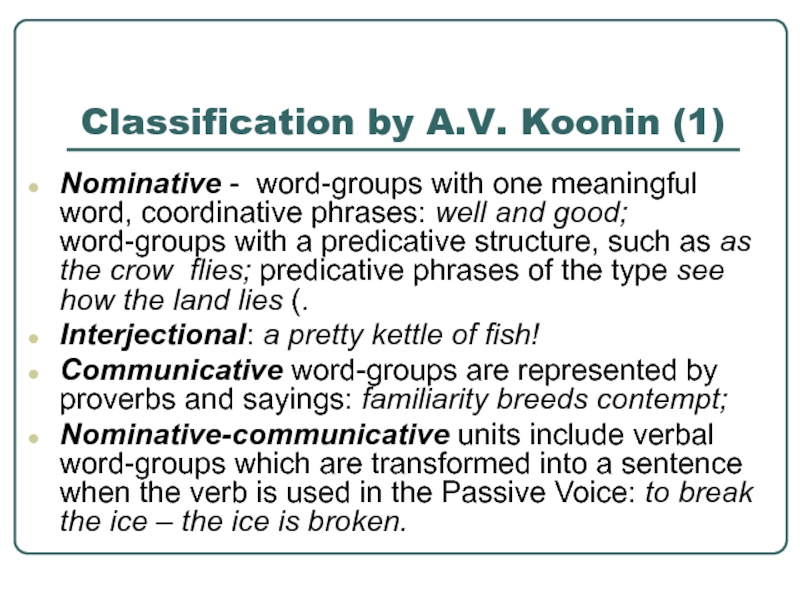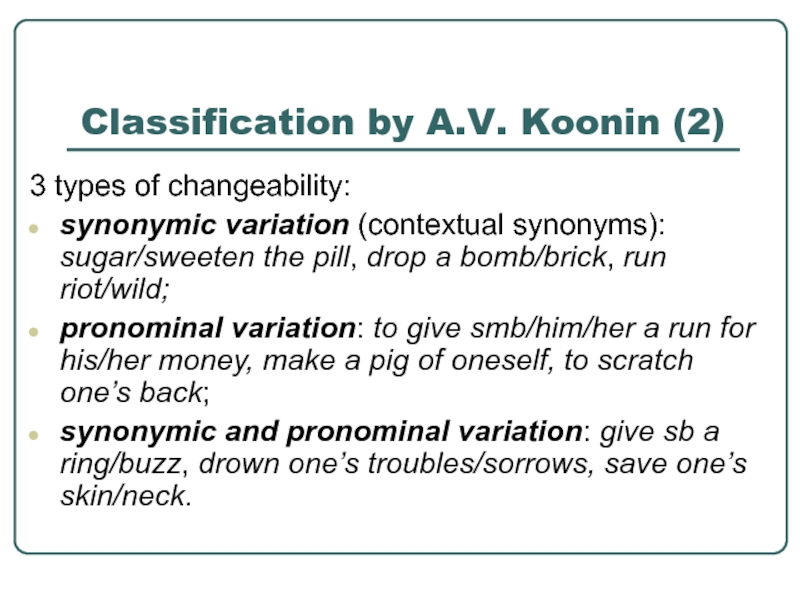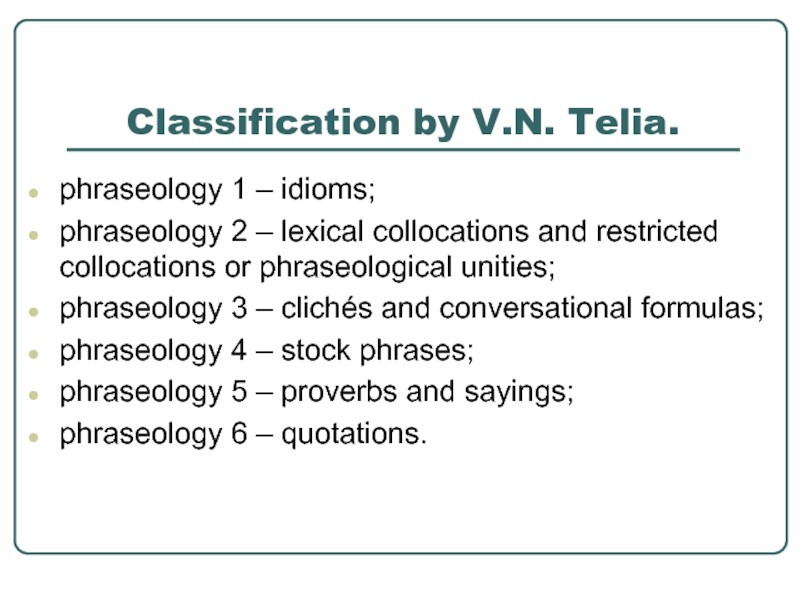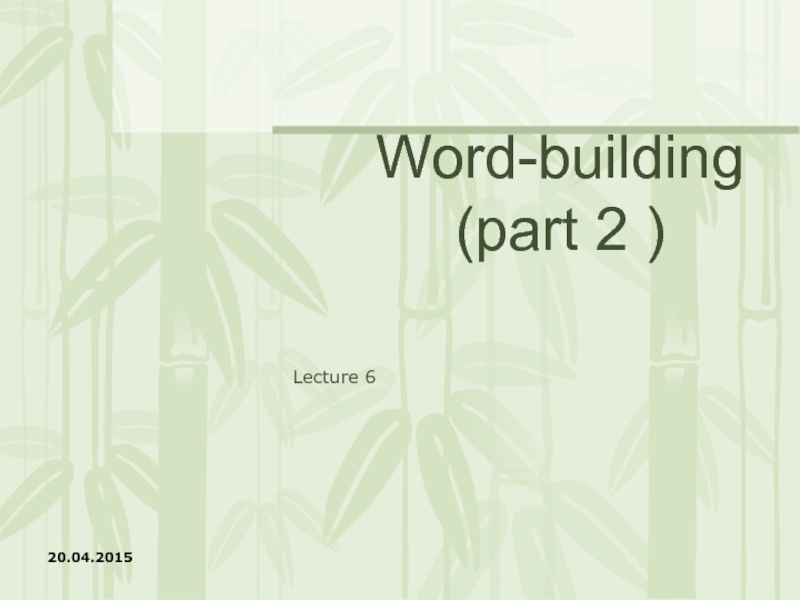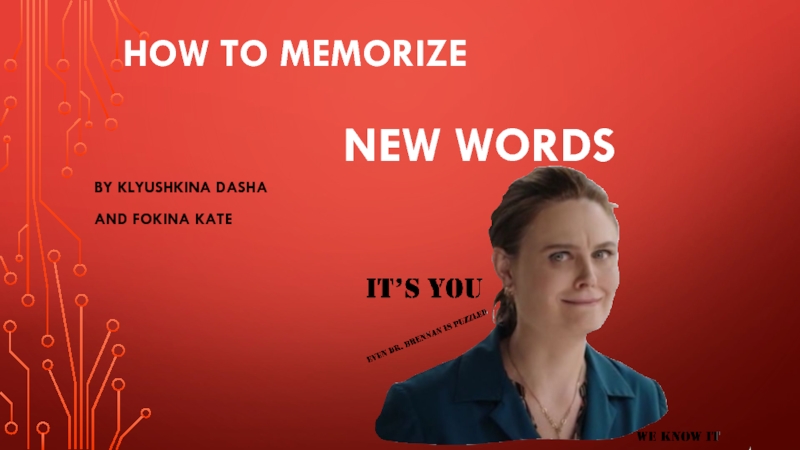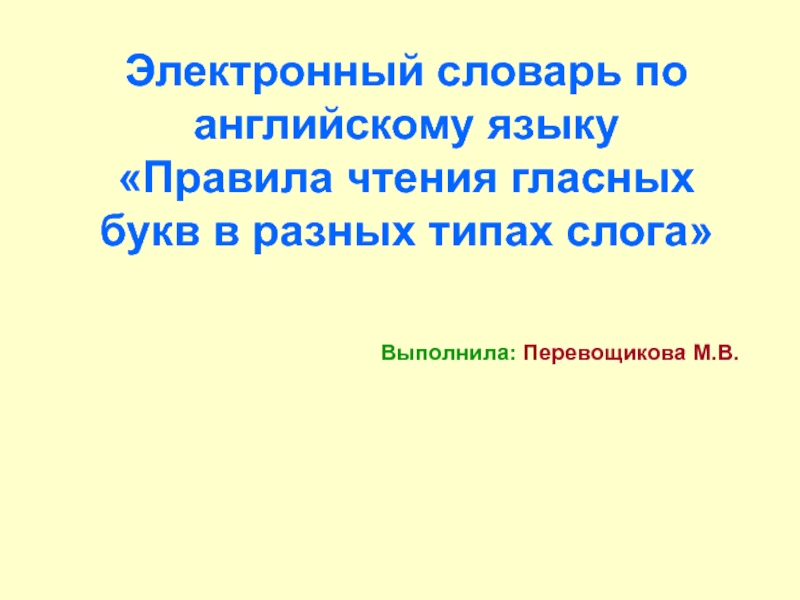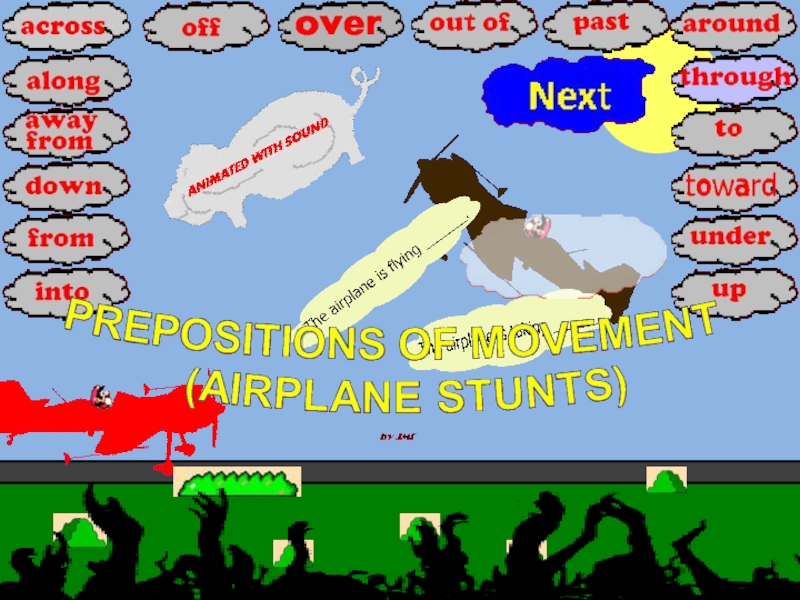- Главная
- Разное
- Дизайн
- Бизнес и предпринимательство
- Аналитика
- Образование
- Развлечения
- Красота и здоровье
- Финансы
- Государство
- Путешествия
- Спорт
- Недвижимость
- Армия
- Графика
- Культурология
- Еда и кулинария
- Лингвистика
- Английский язык
- Астрономия
- Алгебра
- Биология
- География
- Детские презентации
- Информатика
- История
- Литература
- Маркетинг
- Математика
- Медицина
- Менеджмент
- Музыка
- МХК
- Немецкий язык
- ОБЖ
- Обществознание
- Окружающий мир
- Педагогика
- Русский язык
- Технология
- Физика
- Философия
- Химия
- Шаблоны, картинки для презентаций
- Экология
- Экономика
- Юриспруденция
Modern english lexicology. Phraseology. Set-expressions презентация
Содержание
- 1. Modern english lexicology. Phraseology. Set-expressions
- 2. Phraseology Phraseology (Gr. phraseos – expression,
- 3. Phraseology Фразеология – это наука о
- 4. The development of Phraseology Ch. Bally U.
- 5. Set-expression Set-expression is a word-group consisting of
- 6. Terminological problem Set-expressions are also called: set
- 7. The problem of differentiation of a free-phrase,
- 8. Free phrases, e.g. to play with a
- 9. Semi-fixed combinations, e.g. to play with fire
- 10. Set expressions: e.g. The French President refuses
- 11. Specific features of set-expressions Polylexicality -
- 12. Specific features of set expressions that add
- 13. Principles of classification
- 14. Diachronic classification It presents 3 stages
- 15. ”Thematic” classification by L.P. Smith and W.
- 16. Synchronic semantic classification by academician V.V. Vinogradov
- 17. Structural classification by I.V. Arnold verbal: to
- 18. Contextual classification by N.N. Amosova. Phrasemes
- 19. Classifications based on more than one principle.
- 20. Classification by A.V. Koonin (1) Nominative
- 21. Classification by A.V. Koonin (2) 3 types
- 22. Classification by V.N. Telia. phraseology 1 –
Слайд 2Phraseology
Phraseology (Gr. phraseos – expression, and logos – word, science)
V.N. Telija
Слайд 3Phraseology
Фразеология – это наука о фразеологических единицах, т.е. об устойчивых
А.В. Кунин
Слайд 4The development of Phraseology
Ch. Bally
U. Weinreich
A. Makkai
F.F. Fortunatov
A.A. Schachmatov
V.
A.V. Kunin
A.I. Smirnitsky
N.N. Amosova
V.N. Telija
Слайд 5Set-expression
Set-expression is a word-group consisting of two or more words whose
Set-expressions are characterized by stability, i.e. their fixed and ready-made nature, and polylexicality, i.e. consisting of more than one lexical unit.
Слайд 6Terminological problem
Set-expressions are also called:
set phrase (V.V. Vinogradov, semantic approach);
idiom (N.N.
word-equivalent (A.I. Smirnitsky, functional approach);
phraseological unit (A.V. Kunin).
The differences in terminology reflect the differences in the main criteria used to distinguish between free word-groups and set-expressions.
Слайд 7The problem of differentiation of a free-phrase, semi-fixed phrases and set-expressions
There
The semantic criterion realizes in possibility or impossibility to deduce the meaning of the whole word-group from the meanings of the constituents.
The structural criterion shows in possibility or impossibility of substitution in a word-group.
Слайд 8Free phrases, e.g. to play with a dog, are formed in
Слайд 9Semi-fixed combinations, e.g. to play with fire (“to do smth dangerously”)
Слайд 10Set expressions: e.g. The French President refuses to play ball. (coll.
These are ready-made stable word groups, elements make a fixed context for each other to form the whole, with one syntactic function and meaning that is not deduced from the components.
No substitution is possible apart from pronominal and synonymic ones:
She/he knows on which side her/his bread is buttered (pronominal substitution)
To stir/move a finger (synonymic substitution).
Слайд 11Specific features of
set-expressions
Polylexicality - consist of more than one lexical
Structural stability - the components of set expressions are either irreplaceable (e.g. red tape, mare's nest) or partly replaceable within the bounds of phraseological or phraseomatic variance:
lexical (e.g. a skeleton in the cupboard—a skeleton in the closet),
grammatical (e.g. to be in deep water—to be in deep waters),
positional (e.g. head over ears—over head and ears),
quantitative (e.g. to lead smb a dance—to lead smb a pretty dance);
Idiomaticity or figurativity - semantic integrity, realized in a special meaning of the whole in the fixed context which can’t be deduced from the meanings of its components: e.g. “to let the cat out of the bag” - “to let some secret become known”.
Слайд 12Specific features of set expressions that add to their stability and
Rhythmical qualities:
- alliteration, or repetition of initial consonants or vowels: part and parcel, then and there, without rhyme or reason;
- rhyme: by hook or by crook, wear and tear;
- assonance, or the similarity of internal vowels: high and mighty, hard and fast;
- reiteration or reduplication:more and more, on and on.
Semantic stylistic features:
- simile: as like as two peas;
- contrast: sooner or later, for love or money;
- metaphor: a lame duck, to swallow the pill;
- synonymy: by leaps and bounds, proud and haughty;
- puns: as cross as two sticks, you lie like a rug.
Слайд 14Diachronic classification
It presents 3 stages of the development of the
it begins as a free combination;
then it becomes clearly motivated metaphoric phrase;
finally it is an idiom (i.e. entirely loses the meaning of each component).
Слайд 15”Thematic” classification by L.P. Smith and W. Ball
They suggest groups
Слайд 16Synchronic semantic classification by academician V.V. Vinogradov
phraseological collocations or combinations
phraseological unities - the meaning of the whole does not correspond to the meanings of its constituents but the metaphor, on which the shift of meaning is based, is clear and transperent: to know the way the wind is blowing, to lose one’s head, a fish out of water, a big bug;
phraseological fusions or concretions - they are demotivated, i.e. the meaning of the whole cannot be deduced from the meaning of its components, the metaphor, on which the shift of meaning was based, is obscure: tit for tat, neck and crop, at sixes and sevens.
Слайд 17Structural classification by I.V. Arnold
verbal: to make a song and dance
substantive: dog’s life, calf love, white lie;
adjectival: spick and span, brand new,
adverbial: high and low, for love or money;
interjectional: my God!, good heavens!, sakes alive!
Слайд 18Contextual classification by N.N. Amosova.
Phrasemes - stable combinations of words
Idioms - the meaning of each component is entirely lost and the new meaning is created by the whole: in the nick of time, red tape.
Слайд 19Classifications based on more than one principle.
A.I. Smirnitsky
I.
one-summit units - have
two-summit and multi-summit units - have two or more meaningful constituents: black art, common sense, to fish in the troubled water.
II.
proper phraseological units or collocations - units with non-figurative meanings, stylistically neutral and in which grammatical and syntactical centres are in one and same place: get up, fall in love;
idioms or set expressions - units with transferred meanings based on a metaphor, stylistically coloured and in which grammatical and syntactical centres are in different components: take the bull by the horns, dead as a doornail.
Слайд 20Classification by A.V. Koonin (1)
Nominative - word-groups with one meaningful
Interjectional: a pretty kettle of fish!
Communicative word-groups are represented by proverbs and sayings: familiarity breeds contempt;
Nominative-communicative units include verbal word-groups which are transformed into a sentence when the verb is used in the Passive Voice: to break the ice – the ice is broken.
Слайд 21Classification by A.V. Koonin (2)
3 types of changeability:
synonymic variation (contextual synonyms):
pronominal variation: to give smb/him/her a run for his/her money, make a pig of oneself, to scratch one’s back;
synonymic and pronominal variation: give sb a ring/buzz, drown one’s troubles/sorrows, save one’s skin/neck.
Слайд 22Classification by V.N. Telia.
phraseology 1 – idioms;
phraseology 2 – lexical collocations
phraseology 3 – clichés and conversational formulas;
phraseology 4 – stock phrases;
phraseology 5 – proverbs and sayings;
phraseology 6 – quotations.
